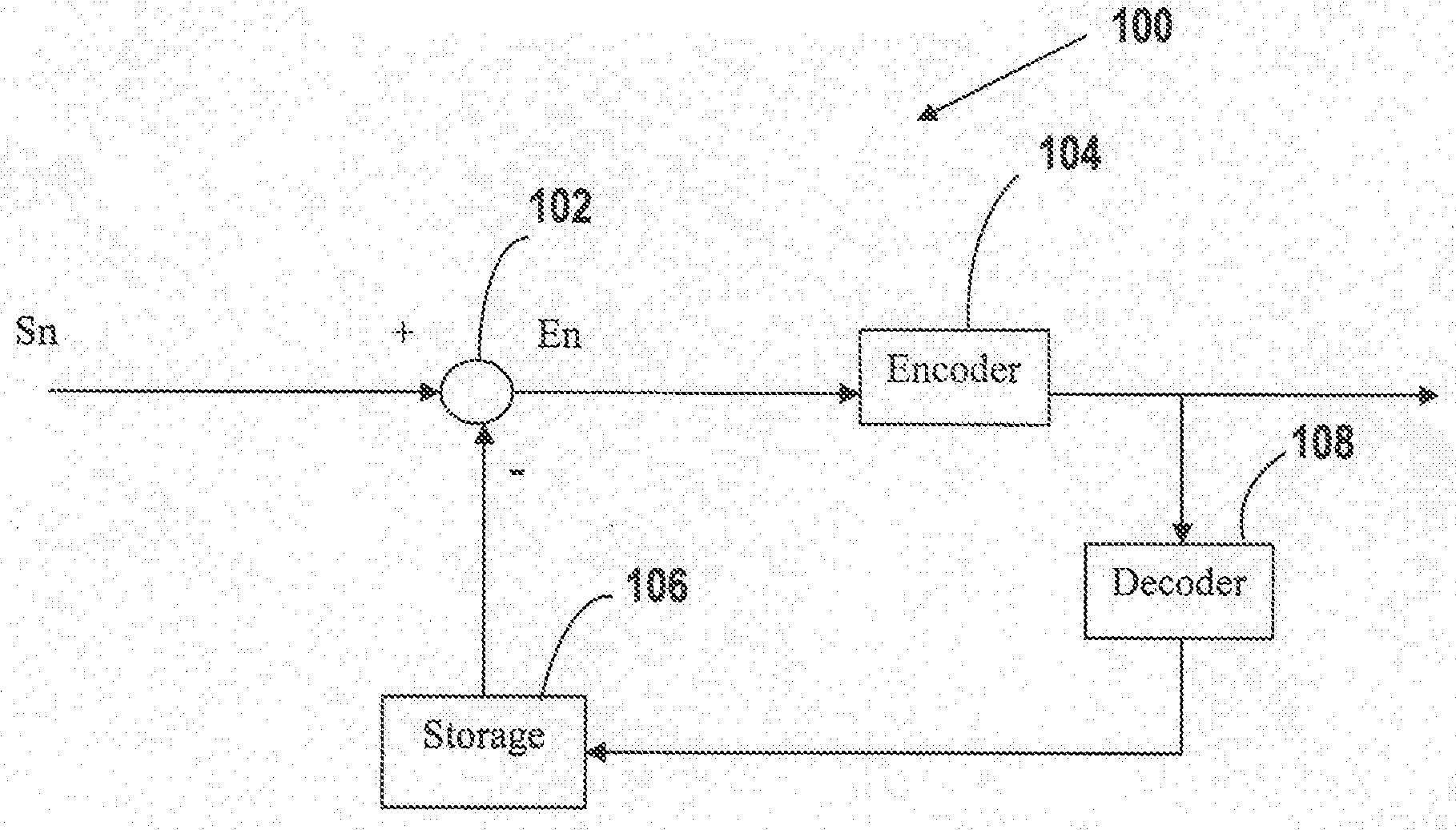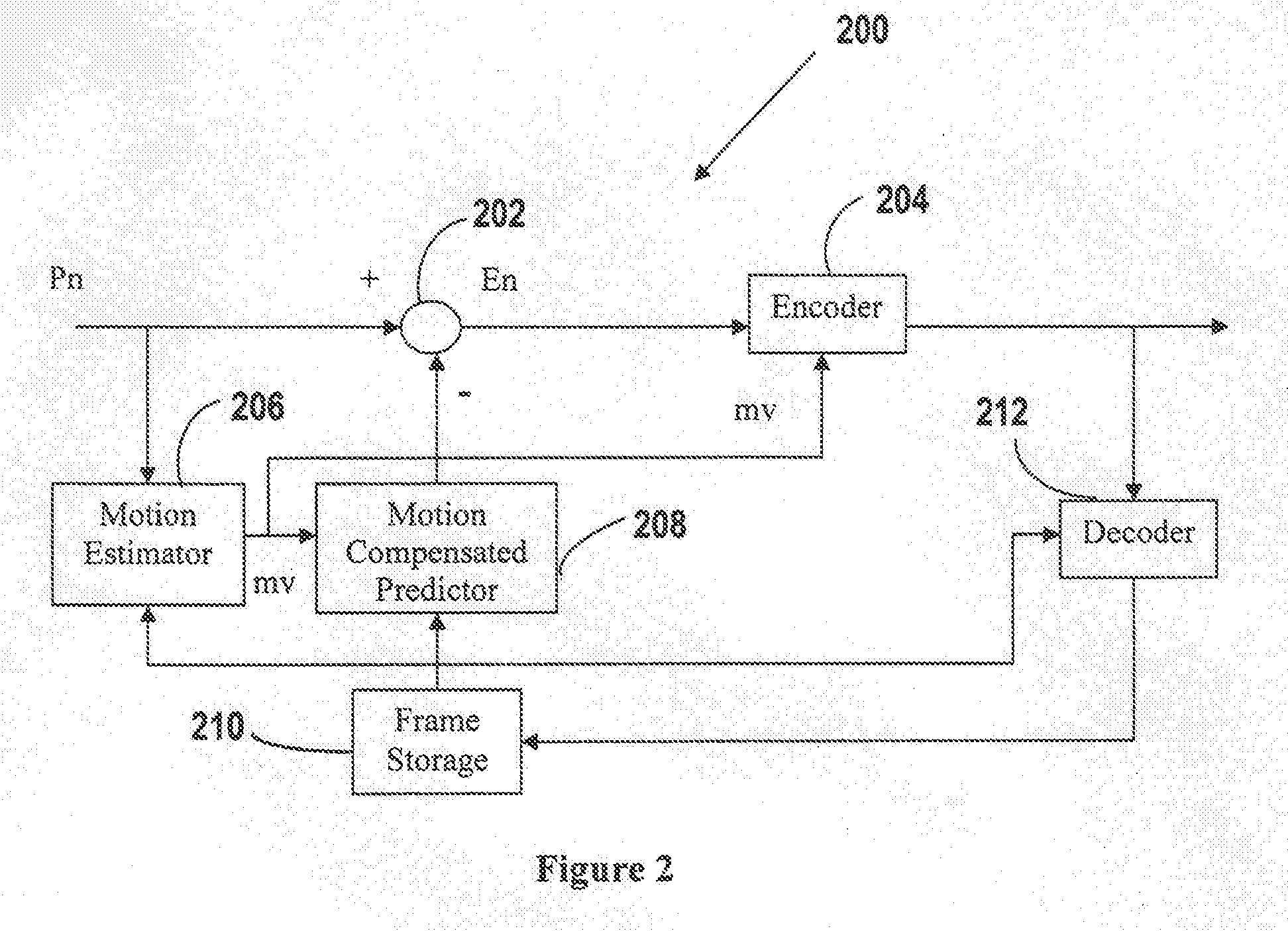Method and system for signal prediction in predictive coding
a signal prediction and predictive coding technology, applied in the field of data compression methods and systems, can solve the problems of large prediction errors, poor performance, and only work well in conventional methods and systems for predictive coding, and achieve the effects of reducing the amount of data being transmitted, reducing the amount of information being transmitted, and reducing the amount of data being coded
- Summary
- Abstract
- Description
- Claims
- Application Information
AI Technical Summary
Benefits of technology
Problems solved by technology
Method used
Image
Examples
Embodiment Construction
[0037]Referring now to the drawings, and more particularly to FIGS. 3-8, there are shown exemplary embodiments of the method and structures of the present invention.
[0038]FIG. 3 illustrates an exemplary system 300 for video coding in accordance with the present invention. The system includes a first comparator 302, a selector 304, an encoder 306, a motion estimator 308, a motion-compensated predictor 310, a second comparator 312, a motion-compensated temporal filter 314, a decoder 316, and a frame storage 318.
[0039]In comparison with the system 200 of FIG. 2, the system 300 of FIG. 3 includes the additional elements of the selector 304, the second comparator 312 and the motion-compensated temporal filter 314. The elements of system 300, which correspond to the elements of system 200, operate in the same manner as described above and a description of their operation is not repeated.
[0040]The motion-compensated temporal filter 314 receives the reference frame data from frame storage 3...
PUM
 Login to View More
Login to View More Abstract
Description
Claims
Application Information
 Login to View More
Login to View More - R&D
- Intellectual Property
- Life Sciences
- Materials
- Tech Scout
- Unparalleled Data Quality
- Higher Quality Content
- 60% Fewer Hallucinations
Browse by: Latest US Patents, China's latest patents, Technical Efficacy Thesaurus, Application Domain, Technology Topic, Popular Technical Reports.
© 2025 PatSnap. All rights reserved.Legal|Privacy policy|Modern Slavery Act Transparency Statement|Sitemap|About US| Contact US: help@patsnap.com



